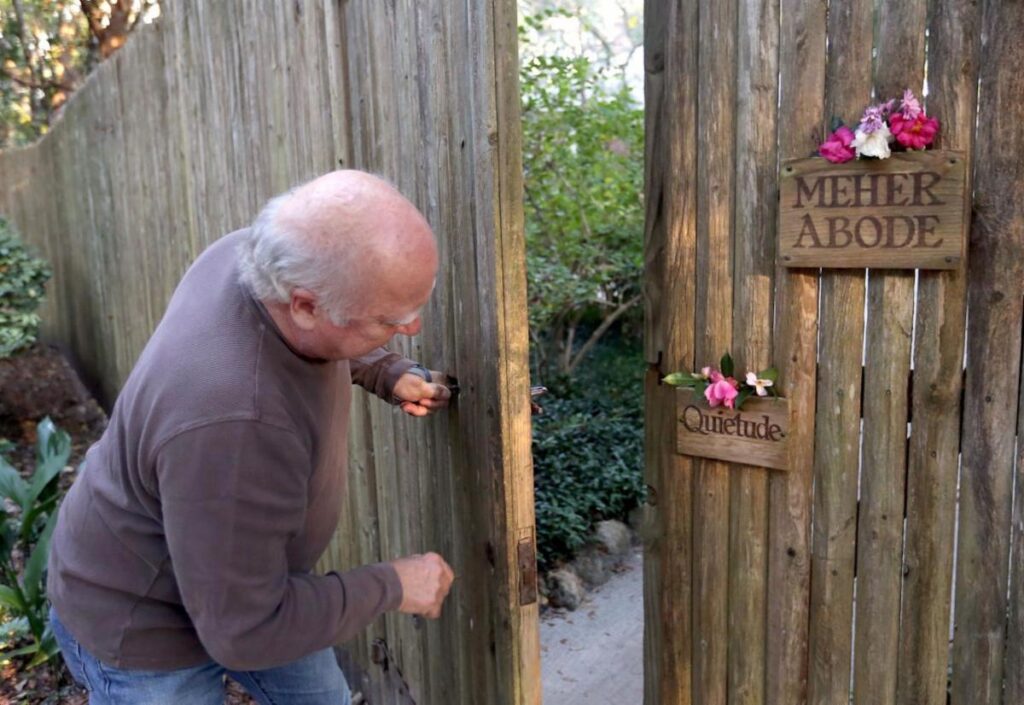
May 28, 2021
Building on Sacred Ground
One of Michael Tych’s co-members on the board of Meher Center says about him, “He watches and listens more than he speaks.” This rings true, because if you didn’t know him, you would never know that this unassuming man, one amongst many here, is the Center’s architect. To this job of fifty years, Michael brings exactly that, his ability to watch, listen to the environment and the myriad factors that constitute the interplay of structure with nature, expansion with preservation, and the task to maintain the delicate balance while keeping focused on the mission of what Meher Center is intended to be.
This skill comes of course from Michael’s accomplished career as an architect, but also from his training under the very best on Center. After hearing about Baba in 1967, Michael came to the Center for the first time in 1971 and fell in love—instantly wanting to live here and be useful. Four years later he was called in by Elizabeth Patterson to discuss the expansion of the Meeting Place. There started his apprenticeship of sorts under Elizabeth, whose influence still affects his own philosophy of what building on Center entails. “Elizabeth was a visionary. The concepts, whether for expansion or new buildings, always came from her. She realized the need to expand the Meeting Place which could originally seat only about thirty people. Similarly, she decided that we rightfully needed a parking lot, because in the old days people would park all over the Center,” he says. Elizabeth’s ubiquitous presence and vigilance, even in the smallest of things, is legendary at the Center. “For the parking lot, we went around together and laid out each parking space in conjunction with the trees.” Subsequent projects included working with Kitty Davy on the Reading Room and Jane Haynes on the Refectory expansion.
Ever since, Michael has been involved in projects including the alterations to the Green Building, Twin Cabins and Lakeview Kitchen, as well as the building of the Playground Gazebo, Laurel Oak Lodges, Gateway Building and most recently the ramp to Baba’s House. Last year he completed his latest four-year term on the Center’s board, and now continues to serve on the Environmental Committee alongside some weekly volunteer duties. While talking about his work on Center, Michael uses the word volunteer almost in every sentence. “Out in the world I am the boss of a project but on Center, Baba is in charge. Work here is in collaboration with staff and other volunteers, where everyone gets a say and we work out our differences.”
No one could deny that while being an honor, the prospect of building on sacred land comes with much responsibility and attention to detail. Michael exudes that thoughtfulness and is fully aware of its delicate challenges. “The best thing a retreat guest ever said to me in this regard was, ‘I have heard there have been many buildings going up on Center, but I don’t know where they are.’” This in a nutshell is Michael’s philosophy and his goal. He believes in the profound beauty of invisibility when it comes to the way the buildings blend into the natural elements. While it may be architecturally more exciting to add new types of buildings, it is almost harder to find materials that match original buildings and make newer buildings look like they have always stood under oak trees embellished by Spanish Moss.
It is clear that close companionship with Baba’s dear disciples Kitty and Elizabeth has been a foundational part of Michael’s life and work. When talking about them, his eyes light up in admiration. “Kitty was a friend. She delighted in everything, and her spirit was adorable. On the other hand, with Elizabeth there was no fooling around. She had an uplifting presence that inspired you to be at your best around her.” Elizabeth’s solid character, wisdom and guidance have left an imprint that are reflected in Michael’s final statements about her, “She was very precise. She never wasted words.”